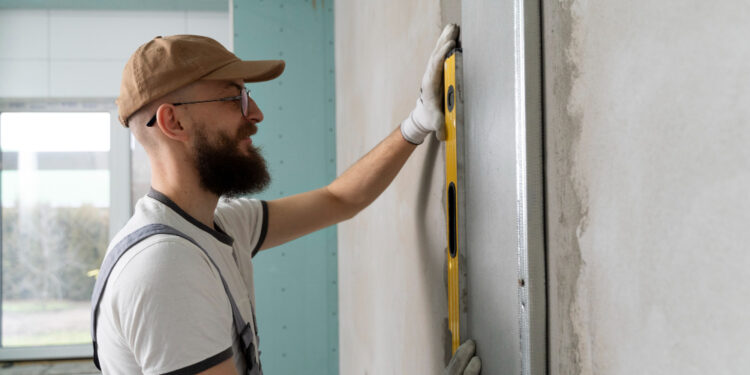As energy costs continue to rise, homeowners are seeking more effective ways to make their homes energy-efficient. One often overlooked yet highly effective solution is inside wall insulation. Whether you’re looking to save on heating and cooling costs or simply make your home more comfortable year-round, insulating your interior walls is a smart investment. But what exactly is inside wall insulation, and how can it benefit you? This guide will dive deep into the world of inside wall insulation, from its types to its advantages, and why it should be on your radar.
What is Inside Wall Insulation?
Inside wall insulation refers to the practice of adding insulation materials to the internal walls of a building to reduce heat transfer. Unlike exterior insulation, which is applied to the outer shell of your home, inside wall insulation is installed within the walls themselves, providing a thermal barrier between rooms or preventing heat loss through poorly insulated walls.
This technique is particularly useful in older homes that were built without proper insulation, but even newer homes can benefit from the added comfort and efficiency that inside wall insulation brings.
Why Inside Wall Insulation is Essential for Your Home
If you’re wondering whether it’s worth the effort, consider this: up to 35% of a home’s heat loss occurs through walls. Without proper insulation, your heating and cooling systems must work harder to maintain a comfortable temperature, leading to higher energy bills. Inside wall insulation addresses this issue by significantly reducing the amount of heat that escapes in the winter and preventing the entry of unwanted warmth in the summer.
Not only does this reduce your utility costs, but it also makes your living space more comfortable year-round. Have you ever noticed cold drafts during winter or uneven temperatures between rooms? Inside wall insulation can help eliminate these problems by creating a more uniform indoor climate.
Types of Inside Wall Insulation
When it comes to insulating your walls, there are several materials to choose from. Each type has its own advantages and ideal use cases, so it’s important to understand which one suits your home best.
1. Fiberglass Insulation
Fiberglass insulation is one of the most common and affordable types of insulation. It is available in batts (pre-cut sections) or rolls and is easy to install. Fiberglass is fire-resistant, moisture-resistant, and does a good job of preventing heat transfer. However, it must be installed correctly to avoid gaps that can compromise its effectiveness.
2. Spray Foam Insulation
Spray foam insulation is a more advanced option that expands when applied, filling in cracks and crevices. This material is highly effective at providing an airtight seal, offering superior insulation performance. Spray foam is ideal for homes with irregular wall cavities or areas where traditional insulation may not fit. However, it is more expensive than fiberglass, and installation should be done by professionals.
3. Cellulose Insulation
Cellulose is an eco-friendly option, made from recycled paper products treated with fire retardants. It is often blown into wall cavities and provides excellent coverage. Cellulose is particularly effective in older homes where the walls may have settled or cracked over time. It is also resistant to mold and pests, making it a durable option for inside wall insulation.
4. Rigid Foam Insulation
Rigid foam boards are another option, offering high thermal resistance and excellent moisture control. These boards can be fitted into wall cavities, providing strong insulation that’s also resistant to water damage. Although more expensive than other options, rigid foam is ideal for homes in areas prone to moisture.
How to Install Inside Wall Insulation
The installation process for inside wall insulation depends on the type of material you choose. In most cases, it’s a straightforward process, but it can vary in complexity depending on your home’s construction.
Step 1: Wall Assessment
Before any installation can begin, a professional will assess your wall structure to determine the best type of insulation for your home. They’ll look for cavities, moisture levels, and the existing wall condition.
Step 2: Preparing the Wall
Next, any necessary holes will be drilled into the wall to insert the insulation material. This is typically done if spray foam or blown-in cellulose is being used. For fiberglass or rigid foam boards, the drywall may need to be removed to access the wall cavity.
Step 3: Installing the Insulation
Once the wall is prepped, the insulation material is applied. Spray foam expands to fill any gaps, while fiberglass batts or rolls are fitted into place. If using cellulose, a blowing machine is used to evenly distribute the insulation throughout the cavity.
Step 4: Sealing the Wall
After the insulation is in place, any holes or removed sections of drywall are sealed up. This ensures the insulation is protected and can do its job efficiently.
Benefits of Inside Wall Insulation
So, what makes inside wall insulation such a valuable investment? There are numerous benefits that homeowners can enjoy:
1. Reduced Energy Bills
By improving your home’s thermal efficiency, you’ll reduce the need to constantly adjust your thermostat. Less energy use means lower heating and cooling bills, which can save you hundreds of dollars per year.
2. Enhanced Comfort
Inside wall insulation helps to maintain consistent indoor temperatures. You’ll no longer have to deal with cold spots or sweltering rooms, as the insulation acts as a barrier against heat transfer.
3. Improved Soundproofing
One lesser-known benefit of inside wall insulation is its ability to dampen sound. If you live in a noisy neighborhood or have thin walls, adding insulation can help create a quieter, more peaceful living environment.
4. Increased Home Value
As energy efficiency becomes a priority for homebuyers, having proper insulation can increase your property’s market value. Potential buyers will appreciate the energy savings and comfort that come with well-insulated walls.
Common Misconceptions About Inside Wall Insulation
Despite its numerous advantages, there are still some common misconceptions about inside wall insulation. Let’s address a few:
“I Don’t Need More Insulation; My Home Already Has It”
While your home may have some level of insulation, it might not be enough to achieve optimal energy efficiency. Many older homes were built with minimal insulation, and even newer ones may not have sufficient inside wall insulation.
“Insulation is Only Important in Cold Climates”
While insulation is crucial in colder regions to retain heat, it’s equally important in warmer climates. Inside wall insulation can help keep your home cool by preventing outside heat from entering, reducing the load on your air conditioning system.
“It’s Too Expensive”
The initial cost of installing inside wall insulation may seem high, but the long-term savings on energy bills quickly offset this expense. Additionally, many governments offer tax incentives and rebates for energy-efficient home improvements.
Is Inside Wall Insulation Worth the Investment?
If you’re serious about improving your home’s energy efficiency and comfort, inside wall insulation is undoubtedly worth considering. Not only will it reduce your energy bills, but it will also create a more comfortable living environment and increase the value of your home.
While the upfront cost may be a concern, the long-term benefits far outweigh the expense. Whether you opt for fiberglass, spray foam, cellulose, or rigid foam, the right insulation can transform your home’s thermal efficiency and overall livability.
Final Thoughts
Inside wall insulation is a smart, long-term investment for any homeowner looking to improve their property’s energy efficiency and comfort. By choosing the right insulation material and ensuring proper installation, you can enjoy lower energy bills, a more comfortable home, and even increased property value. With so many options available, there’s a solution for every home and budget.
Energy Saving Grants is your trusted partner for accessing government energy saving grants designed to enhance the energy efficiency of homes across England, Scotland, and Wales. Specializing in energy efficiency grants, they assist homeowners, tenants, and landlords in securing grants for energy efficiency measures such as solar panels, insulation, and heating systems. Their expertise covers a range of schemes including the ECO, LA Flex, and the Great British Insulation Scheme. With quick decisions, Trustmark approved installers, and free expert advice, Energy Saving Grants simplifies the application process for government grants for energy efficiency, helping reduce energy bills and carbon footprints.













































